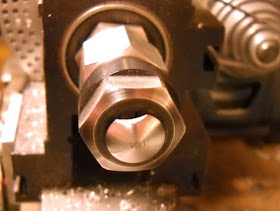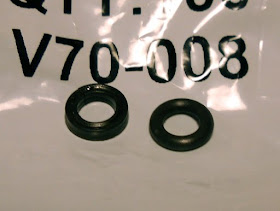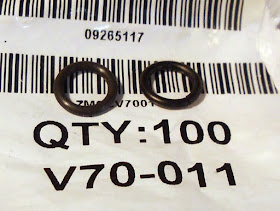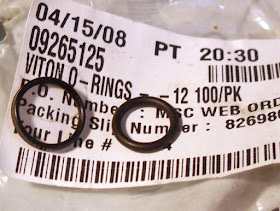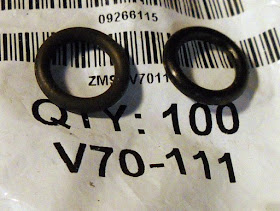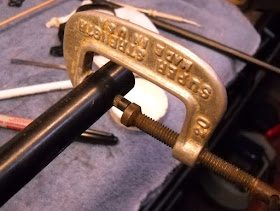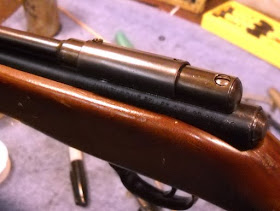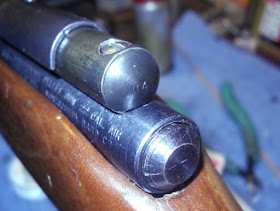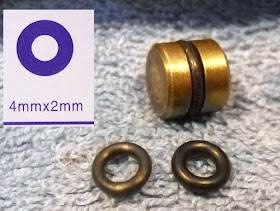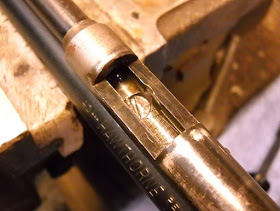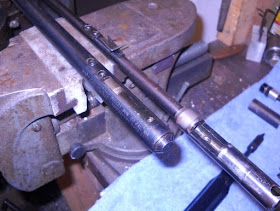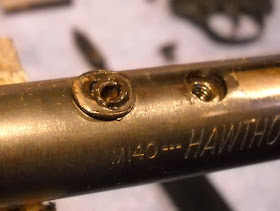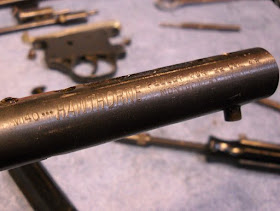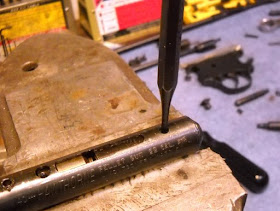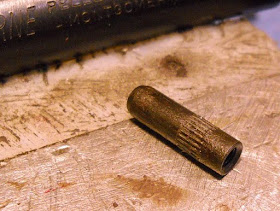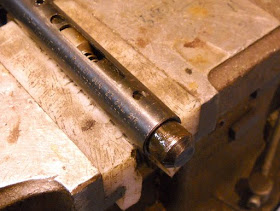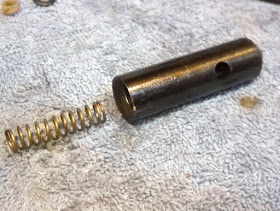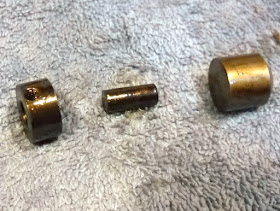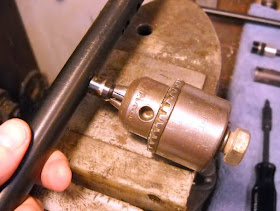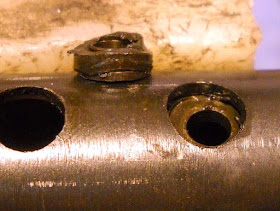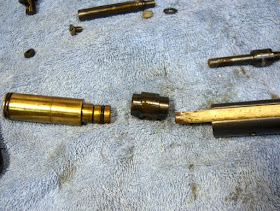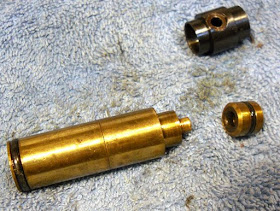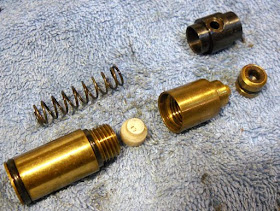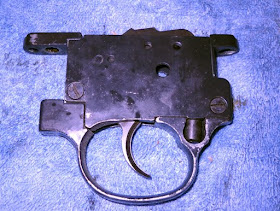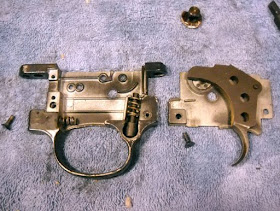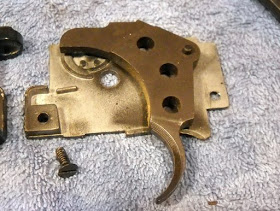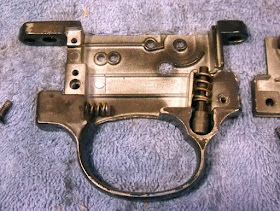
With the diopter sight installed, the rear sight holes in the base block stood empty. Beeman used to offer a steel plate to cover the holes and sight base. I think the last cost on it was around $30. Due to Beeman's recent sale, I have no idea if this part will still be available for much longer.

Here, the holes are temporarily filled with brass set screws. They're some crazy ultra-fine metric size. They're M5 X 0.5 mm. "Normal" M5 bolts have the threads 0.8 mm apart. Good luck finding set screws in this size. I got a couple from Chuck at Precision Airgun. If I hadn't found any, it would be a simple matter to make some using a thread cutting die. I found a small pile of the dies at Kromhard Twist Drill Company this week--I think the die costs about $11 . Kromhard is a great source for hard to find taps and dies. It's their specialty and they make every effort to carry thread cutting tools in sizes we don't even know exist. Non-standard seems to be THE standard in the gun industry.

Dug out a strip of steel from the scrap box. It's almost the exact width and length needed. It's 0.510" wide and about 3.3" long.

A bit of Dykem layout fluid.

Dialed a caliper to half the 0.510" width...

Set one jaw on a long edge and slid the caliper across the Dykem coated face, scratching a fine line dead center. Center located.

Removed the brass setscrews.

Couldn't find any M5 x .5 mm flat head screws. Elected to turn the brass set screws into threaded bushings. The Beeman plate uses the same technique.

The rearmost set screw stood proud by a few thousandths. Chucked it in the 3-jaw on the Taig lathe. Faced it down then spotted the center.

Through drilled with a #47 drill bit.

Followed up with a #3-48 tap.

Reinstalled into the rear hole. Same procedure to the front set screw. I worked each set screw separately to maintain center.

Measured the hole spacing between the two bushings. (The holes are 1.565" apart.) Used a 3X magnifier to ensure I was on the scribed line. Marked first with a transfer punch then followed with a spring loaded center punch for a deeper mark.

Spotted both marks on the drill press.

Then clearance drilled with a #40 bit (0.098").

The #3-48's just fit.

Testing, testing....

Countersunk the screw heads.

Wire brushed.

Need to square the ends.

A scrap block of steel. It's got clean 90 degree corners, so the long edge of my plate is lined up and the end is left just slightly higher than the block.

Filed down until flush with the block.

A file card and some chalk help keep the file from loading.

Flipped and repeated on the opposite end.

At this point, it's just a steel rectangle. I hand filed the front and rear to make a smooth transition to the base block.

The front gets a longer taper.

Started at 180 grit.

Finished sanding with a steel block wrapped in 500 grit emery cloth. This gave good control over the scratch pattern.


Some Mothers Mag & Aluminum Polish on the back of a 10 meter target was used to bring the plate to an almost mirror finish.

Final polish on the tapered ends was sped up with a buffing wheel.

Polished out and then hit it with Birchwood Casey Super Blue.

Done deal.

Looks OK.

I'm about finished with the HW35 for now. Did find an old Flaig Ace trigger shoe that seems to match the curve and width of the blade, but it's too long. Think I'm going to either mill or grind it down to fit rather than make one from scratch. Doesn't sound too exciting, but I'll take a few pics.
Random: Typically, I try to use metric on metric threaded guns and Imperial on--well, you get the idea. Used the #3-48's because I had some and I was snowed in today. If I'd had flat head M2.5 X 0.45 mm, I'd have gone that route.

